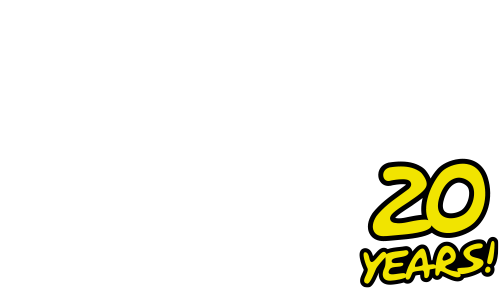Story I Read: “The Hulk” (The Incredible Hulk #1 MAY 1962)
Comics in the Silver Age relied on a balance between good and evil, black and white, hero and villain. This balance was tipped rarely. If it was tipped, usually, what resulted was a failed title. The reason for this was simple: the Comic medium was too young for wild experimentation. Television and film of the period still relied heavily on cliche and stock characters. Though there were a few characters and films that broke the mould, most of the stories seen every night on the tube or at the pictures were inspired from a melodramatic ‘white/black hat’ conflict. Comics found themselves perpetuating the norm established by their older siblings.
When the Hulk debuted in 1962, he debuted into a comic world that was not yet ready for him. This prematurity was the reason for his ultimate failure, for only six issues later, this Marvel title would be canceled. The Hulk failed because he was too real.
Realism is both the reason the premiere issue is brilliant and the reason it failed.
Marvel, as I have stated many times before, is a company which strives to apply a ‘real’ outlook to superhero comics. They want to create characters that resonate with the readers as tangible possibilities who could exist along side real people like JFK or Khrushchev. They don’t want to create legends to be worshipped like the archetype demigods of the DC Universe.
Hulk was the great realist experiment. Stan Lee created Bruce as a vainglorious doctor, who invented a new type of weapon of mass destruction, who after an Oppenheimer moment in which he witnesses a rather ditzy teenager put himself in harms way, sacrifices himself while saving that ditzy teenager. Instead of dying, Dr. Bruce Banner absorbs an unnatural amount of Gamma radiation which mutates him into a Jekyll/Hyde like monster.
Jekyll and Hyde, created by Robert Louis Stevenson, relies upon the theory that man has two sides to his personality: the logical and the instinctual. The logical side is the one that controls thought processes and the instinctual side is the animal urge, the seat of sex and rage.Just like in the Doyle, Bruce becomes the Hulk when the sun sets and he goes to sleep. While he’s the Hulk, Bruce is not conscious of his actions and the Hulk becomes an untamable monster. That happens in this comic many times, showing his chaotic instinctual strength when he destroys army platoons, or absolutely ravages a small town.
Silver Age comics were based on a concrete black and white balance. The Incredible Hulk doesn’t work because there is too much grey area. Hulk and Gargoyle (the supposed antagonist) suffer essentially the same malady meaning they could both be the hero and both be the villain. This means there’s no one to follow. Bruce Banner is a villain who gets very sick. At the top of the story Bruce was busy working away on a weapon of mass destruction. He began as a villain.
There is a political comment here and it is worth noting. In the early Sixties the anxiety over nuclear war was fever pitch. Many felt that the world was about to end because a group of scientists had used their knowledge to prop governments up and plunge the world into what seemed like an infinite standoff. It is fitting that Marvel, run by self confirmed hippies, made a political statement about the nature of nuclear war. Though I enjoy the political comments being made, it seems out of place in the juvenile world of the Silver Age.
Bruce Banner is not the only character that is hard to peg in this comic. The Gargoyle, a brilliant and terrifying disfigured communist spy, is a mirror image of Bruce/Hulk. He is constantly battling with the need to find human contact and be authentic with some one. At one point he bemoans his deformity to the point of existential agony. Though he searches out the Hulk and captures him to harness his energy for the Soviet cause, there is part of him that sees the Hulk as an equal and therefore, some one he can confide in.
Both characters: Bruce and Gargoyle are given a 3 dimensional portrayal that shows their constant struggle with the darkness that exists within them. Just as Bruce sacrifices himself for Rick Jones, Gargoyle sacrifices himself for Bruce. At the very end when a bomb is about to go off, a bomb based on the work of Banner, Gargoyle redirects the trajectory of the missile to kill the Soviet High Command. The actions of the Gargoyle in the final panels redeem him to the status of a true hero. A status that Bruce and the Hulk never quite reach.
The ambiguity of the characters is both the marvelous thing about this issue and the thing that probably made it fail. It is very hard to tell exactly who the hero is. While the title suggests Bruce is the hero, it is hard to agree with this, as while Bruce does one heroic action, he spends most of the issue, through the guise of Hulk, creating chaos and generally being a villain. This is a wonderfully head of its time character, which is probably the reason for the success of Hulk in later years, but in this age of absolutes, he’d be far too complex to gain a large following.
Rating: 4 out of 5
Pros: The complexity of both Bruce Banner and the Gargoyle. The satirical consciousness. The detailed and dark art of Jack Kirby
Cons: Hulk is grey. Betty Ross and Thunderbolt Ross are grossly underdeveloped. Rick Jones is rather annoyingly written.
Upcoming Review: "The Coming of the Plantman" (Strange Tales #113 OCT. 1963) Copyright Nov.29, 2013 by extremisreviews.com

